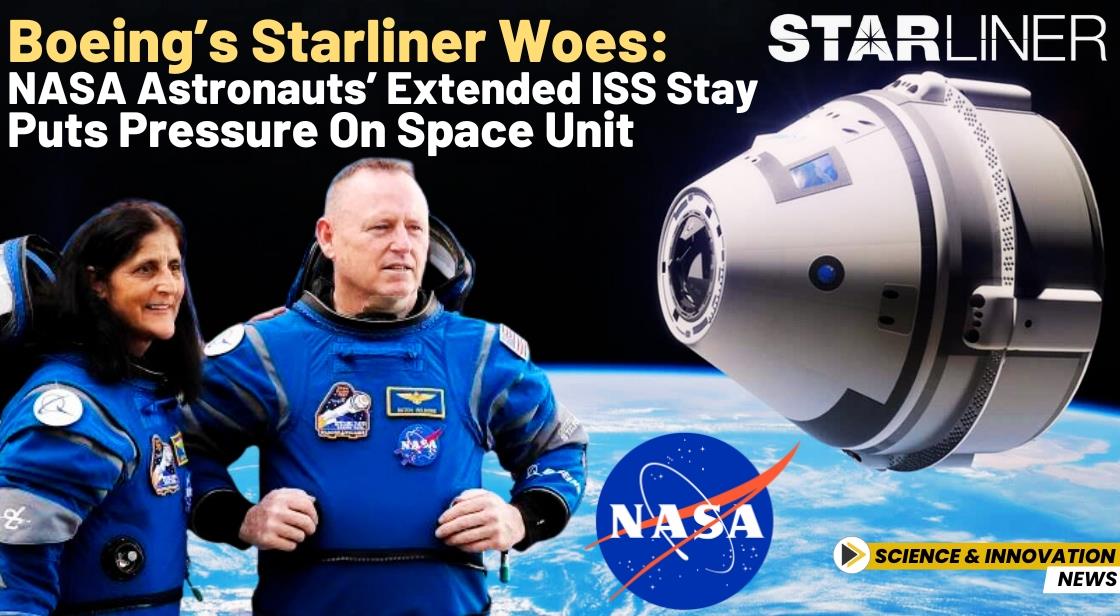Boeing’s Starliner Woes: NASA Astronauts’ Extended ISS Stay Puts Pressure on Space Unit

News Synopsis
Boeing’s space division is facing intense scrutiny after NASA decided to send the company’s Starliner capsule back to Earth without astronauts, marking another setback in the aerospace giant’s troubled space endeavors. The decision came after years of technical issues and delays, raising significant questions about the future viability of Boeing’s space unit, according to industry analysts and insiders.
Starliner Mission's Delays and Challenges
The Starliner capsule, which was supposed to be a key milestone for Boeing by carrying NASA astronauts Butch Wilmore and Sunita Williams to the International Space Station (ISS), has been plagued by numerous setbacks. Initially planned as an eight-day mission, the astronauts’ stay has been extended to eight months due to malfunctioning propulsion systems.
This situation forced NASA to deem the thrusters unsafe for the return journey, leading to the decision to bring Wilmore and Williams back on a SpaceX Crew Dragon capsule next year. This incident is yet another blow to Boeing, which has been struggling to keep pace with Elon Musk’s SpaceX in the competitive space industry.
Financial Impact and Future of Starliner
Since 2016, Boeing has incurred $1.6 billion in cost overruns related to the Starliner program, as per a Reuters analysis of securities filings. The latest setback underscores the ongoing challenges within Boeing’s space division and casts doubt on whether the Starliner project will ever be profitable. The mission was supposed to be the final test before NASA could certify Starliner for regular flights, a significant milestone that now seems uncertain.
Kelly Ortberg, Boeing’s newly appointed CEO, is faced with a critical decision: whether to continue investing in the Starliner project or to reallocate resources to focus on restoring the reputation of Boeing’s core aviation business. Analysts have expressed skepticism about the profitability of the Starliner program, with some suggesting that Boeing may need to reconsider its involvement in the space capsule business.
Starliner’s Persistent Issues and Industry Comparison
Starliner’s development has been marred by persistent hardware and software issues, particularly with its propulsion system. During a recent attempt to launch, a helium leak was discovered, leading NASA to label the propulsion system as having a "design vulnerability" that Boeing must address before the next mission. This is just one of the many technical challenges that have plagued the Starliner project.
In contrast, SpaceX’s Crew Dragon has been certified by NASA since 2020 and has successfully completed 10 crewed missions. The cost per seat on Crew Dragon is approximately $55 million, while the cost on Starliner is estimated at around $90 million. SpaceX’s ability to deliver reliable and cost-effective solutions has positioned it as the dominant player in the space industry, further highlighting the challenges Boeing faces.
NASA’s Dilemma and Boeing’s Strategic Decisions
NASA finds itself in a difficult position, relying on Boeing as a crucial backup to SpaceX, especially in light of the fact that SpaceX is currently the only entity capable of putting humans into orbit apart from Russia and China. However, Boeing’s delays and technical issues have forced NASA to extend its contract with SpaceX, which now totals $4.9 billion.
To certify Starliner, Boeing may need to redo the astronaut mission to the ISS, a costly endeavor that could further delay the program. NASA’s space operations chief, Ken Bowersox, has indicated that all options are on the table, though no specifics have been provided.
Broader Implications for Boeing’s Space Business
Beyond the Starliner project, Boeing’s space division faces additional challenges. The company is years behind schedule and billions over budget on NASA’s Space Launch System (SLS) rocket, a key component of America’s moon program. NASA’s inspector general has raised concerns about the quality control and workforce qualifications at Boeing’s SLS facility in Michoud, Louisiana. Boeing has disputed these findings, but the issues persist.
With a workforce that has seen significant departures to competitors like SpaceX and Blue Origin, Boeing’s space unit is struggling to maintain its competitive edge. The company’s cumbersome supply chain and complex design processes have further exacerbated these challenges.
Strategic Outlook: What Lies Ahead for Boeing?
Looking ahead, Boeing’s space division faces an uncertain future. While NASA administrator Bill Nelson has expressed confidence that Starliner will eventually fly astronauts again, the long-term viability of the program remains in question. Boeing may need to consider alternative strategies, including the possibility of exiting the space capsule business altogether.
Industry analysts like Richard Aboulafia suggest that Boeing’s new CEO, Kelly Ortberg, will need to carefully evaluate the financial and strategic implications of continuing the Starliner program. Given the significant challenges and competitive pressures, Ortberg may ultimately decide that Boeing’s resources are better allocated elsewhere.
Conclusion
Boeing's space division faces a critical juncture as it grapples with the ongoing challenges of its Starliner capsule program. The repeated technical failures and delays have not only strained its relationship with NASA but also raised questions about the long-term viability of its space ventures. While NASA continues to view Boeing as a vital partner in its space missions, the financial and reputational toll on the aerospace giant cannot be ignored. As Boeing's new CEO, Kelly Ortberg, navigates these turbulent waters, the decisions made in the coming months will be pivotal in determining whether Starliner can regain its footing or if Boeing will need to reconsider its place in the competitive space industry. The path forward is fraught with challenges, and the stakes have never been higher for one of America's most iconic companies.
You May Like









